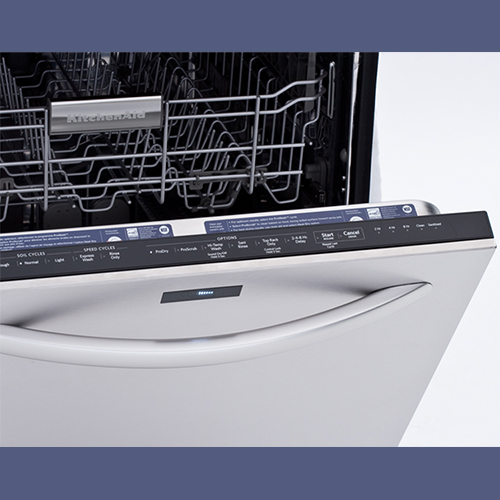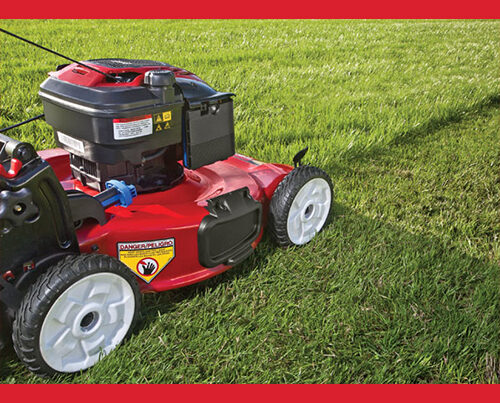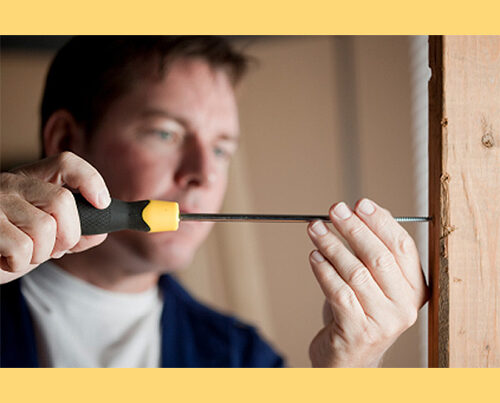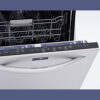Time to pick out a new dishwasher? If you’ve had your present dishwasher for a decade or more, you’ll probably be pleasantly surprised by all of the convenient features that many dishwashers now have. Of course, price, efficiency, and functionality are all still priorities, but shop around before you buy! To help you get started on your research, here are a few guidelines for finding a great new dishwasher:
The Price is Right
Aside from how they perform in our tests, dishwashers differ in type, features, and, of course, cost. On the lower end, dishwashers cost from about $250 to $600. Prices for high-end models can soar to around $2,200.
Budget dishwashers. In general, if you opt for a model at a modest price point, you’ll get more performance than glitz, and fewer convenience features. As a group, they typically cost up to $600. Some clean nearly as well as a premium-priced model, and you may still get adjustable racks and a soil sensor. On the flip side, these models tend to be noisier than upscale versions and have fewer flexible-loading options to accommodate oversize items.
High-end dishwashers. At roughly $700 plus, premium models tend to be quieter and have ample flatware slots, folding tines, and other flexible-loading features. Hidden controls and a cycle-time display add style and convenience. Many have a stainless-steel tub, which tends to resist stains better than plastic.
Dishwasher drawers. For new construction or a complete kitchen renovation, you might consider dishwasher drawers. They typically include two small, stacked drawers that you can use simultaneously or separately. Compared to dishwashers with doors, the drawers are easier to load. But they can be expensive, and the models we’ve tested haven’t performed as well overall as budget-priced conventional dishwashers. Capacity is relatively small, limiting how much you can wash at once.
Before You Shop
Look for Convenience
Dishwashers that score well for ease of use usually include adjustable racks and lots of flatware slots. Some mid-priced models have third racks that let you lay down large utensils or short cups. Many also have fold-down tines, which allow for fitting in large or odd-shaped dishes and other dinnerware.Match Your Cleaning Habits
All our picks clean well enough for you to skip the pre-rinse before loading. If you simply cannot stomach the idea of dirty dishes going in unwashed, then be sure to turn off the power-scrubbing modes that will cost you (in water and power). And if you’re especially concerned about noise, opt for a model with an manual-clean filter (they’re becoming more available) rather than a self-cleaning one, which tends to be noisier.Match Your Décor
All about good looks? Then opt for cabinet-front models; they accommodate panels that blend in with your cabinets.Check the Controls
Some models include interactive touch controls, but the usual touchpads are fine if they’re clearly marked. If controls are invisible when the door is closed, look for cycle-time and other visible displays. Many models with hidden controls display a light or other indicator to tell you the dishwasher is running, a plus for extra-quiet models. Still, with cycle times running around two hours or more, we prefer a more detailed indicator of time remaining.Watch the Dimensions
The width and depth of every conventional dishwasher is intended for a cavity measuring 24 by 24 inches. Fitting in your new dishwasher could be a challenge if you’ve tiled the floor and/or re-done your counters, changing the height of the cavity. Before deciding on a model, measure your space and ask the seller for the full height range (and don’t forget to account for adjustment of the leveling feet).Find the Best Features
Look for attributes that will save you time, money, and effort:
Adjustable (or Extra) Racks and Loading Aids
Racks that move up and down, tines you can adjust, and silverware and stemware holders let you reconfigure the interior of the dishwasher and organize the contents. Those devices are handy when you cook for a crowd, and can help fit large and oddly shaped items. Certain models go an extra step with, for example, upper racks you can adjust single-handedly. Pay a premium for your dishwasher, and you’re likely to get a third rack for large utensils and small cups (think espresso). A few models let you raise or lower portions of the rack to fit slightly taller items.
Soil Sensors
This adjusts the cycle’s time and water use to the load’s soil level, improving efficiency.
Rinse/Hold Cycle
It lets you rinse dirty dishes when you’re not quite ready to start a full cycle (rather than letting stubborn food mess get even more recalcitrant). This perk can reduce odors and prevent soil from setting while you stack up enough dirty dishes for a full load.
Wash Zones
Some newer models designate a certain part of the dishwasher for heavily soiled items needing a special cycle. These zones don’t necessarily run the whole time—with certain models, it’s only for a few minutes. In our labs, they do seem to work as promised.
Filters
These keep wash water free of food that could be re-deposited on clean dishes. There are two types: self-cleaning and manual. With self-cleaning filters, a grinder pulverizes the debris and flushes it down the drain. That’s convenient but can be noisy. Some models instead have a filter without a grinder. It’s quieter, but you need to clean it periodically to avoid iffy smells, a job that takes a few minutes.
SRC: Find more information about picking out a dishwasher here: www.consumerreports.org/cro/dishwashers/buying-guide/index.htm







